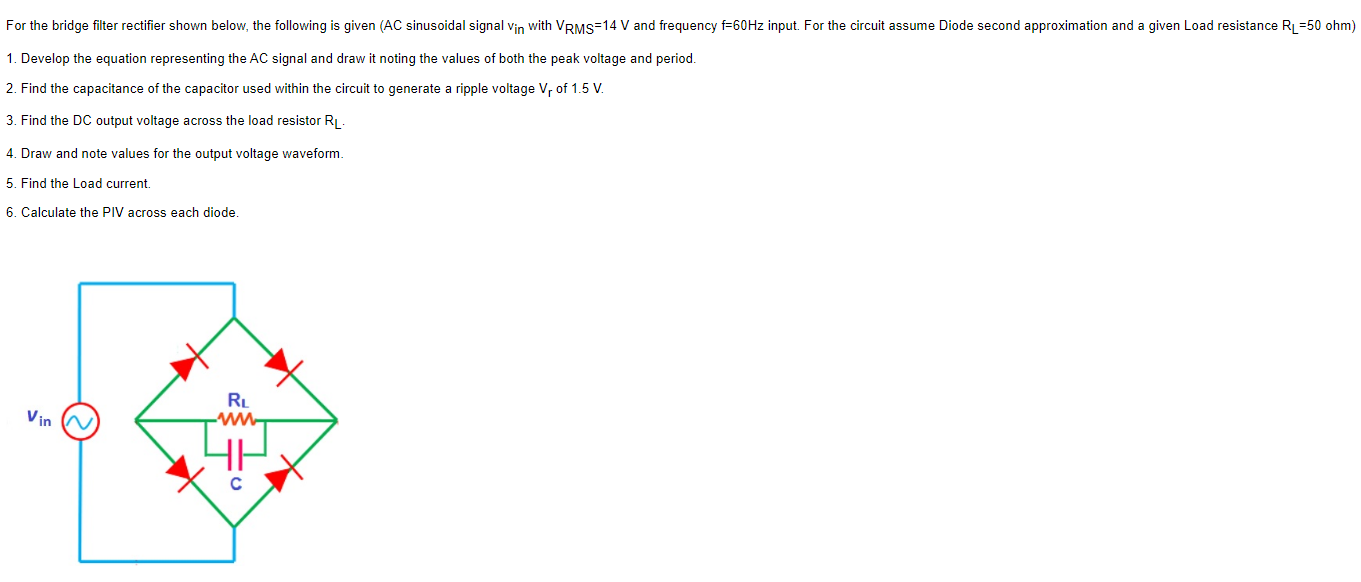For the bridge filter rectifier shown below, the following is given ( AC sinusoidal signal vin with VRMS = 14 V and frequency f = 60 Hz input. For the circuit assume Diode second approximation and a given Load resistance RL = 50 ohm) Develop the equation representing the AC signal and draw it noting the values of both the peak voltage and period. Find the capacitance of the capacitor used within the circuit to generate a ripple voltage Vr of 1.5 V. Find the DC output voltage across the load resistor RL. Draw and note values for the output voltage waveform. Find the Load current. Calculate the PIV across each diode.
